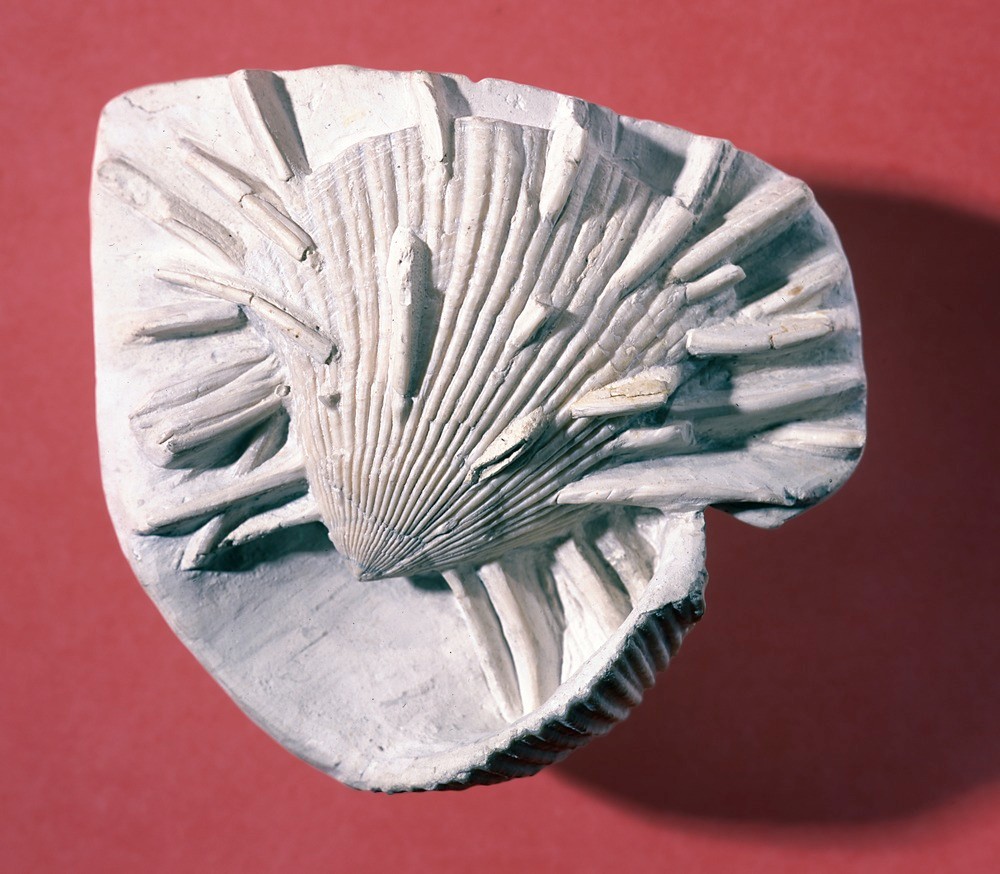| P number: | P549457 |
|---|---|
| Caption: | Spondylus spinosus, a fossil bivalve. |
| Description: | Spondylus is a bivalve that is often found in the Upper Cretaceous Chalk of southern Britain, between Dorset and Norfolk. The illustrated species, Spondylus spinosus, is found throughout much of the Cenomanian to Campanian (about 75 to 95 million years ago). Spondylus spinosus has an ovate, slightly inequivalved shell with a broad umbone (which is the point at which growth of the shell started). The right valve (the one shown here) is larger than the left one and has a series of strong radial ribs. The surface of the shell is covered by long spines. Bivalves are molluscs that first evolved over 500 million years ago during the middle of the Cambrian period. They flourished during the Mesozoic (particularly the Jurassic and Cretaceous) and in the Cainozoic eras. They are abundant in the modern seas and dead shells are often found in the beach sands around the world. The early bivalves are associated with marine palaeoenvironments, but they later colonised brackish and fresh waters. As they are so common in modern times, their mode of life can be extrapolated back into the geological past and used in palaeoenvironmental reconstructions. |
| Photographer: | Unknown |
| Copyright statement: | NERC |
| Orientation: | Landscape |
| Size: | 430.51 KB; 1000 x 874 pixels; 85 x 74 mm (print at 300 DPI); 265 x 231 mm (screen at 96 DPI); |
| Average Rating: | Not yet rated |
| Categories: | Best of BGS Images/ Fossils |
Reviews
There is currently no feedback

